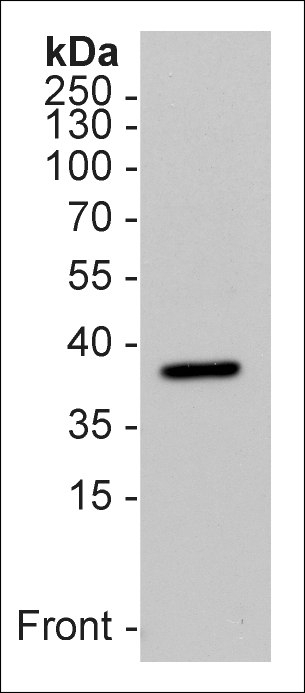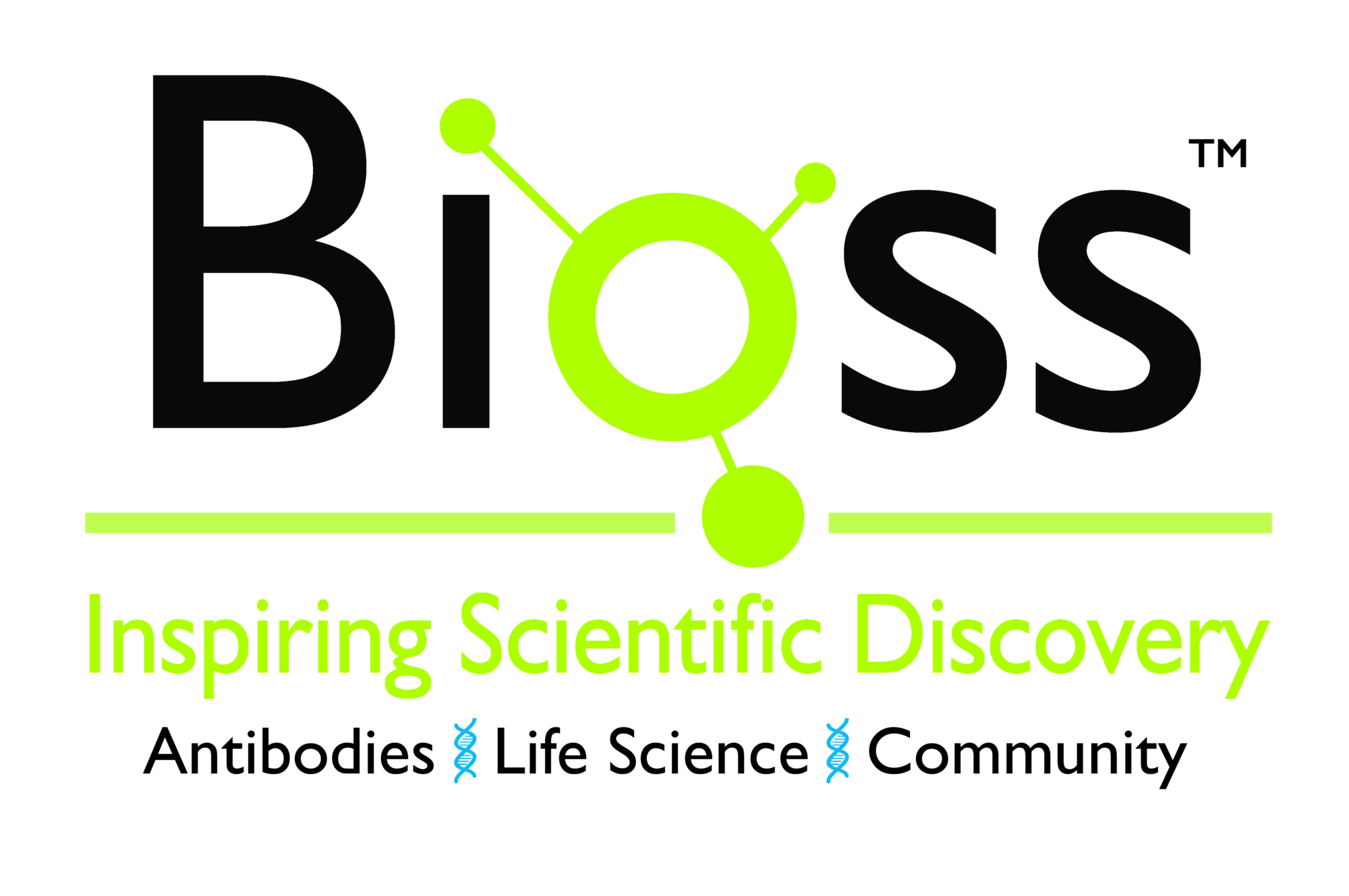
Western Blot using anti-Survival Motor Neuron Protein (human), mAb (7B10) (Prod. No. AG-20T-0003) on 15microg of human platelet lysate as a positive control (15microg). ECL detection.
anti-Survival Motor Neuron Protein, mAb (7B10)
AG-20T-0003
ApplicationsImmunoPrecipitation, Western Blot
Product group Antibodies
ReactivityHuman
TargetSMN1
Overview
- SupplierAdipoGen Life Sciences
- Product Nameanti-Survival Motor Neuron Protein, mAb (7B10)
- Delivery Days Customer10
- ApplicationsImmunoPrecipitation, Western Blot
- CertificationResearch Use Only
- ClonalityMonoclonal
- Clone ID7B10
- Concentration2 mg/ml
- Gene ID6606
- Target nameSMN1
- Target descriptionsurvival of motor neuron 1, telomeric
- Target synonymsBCD541, GEMIN1, SMA, SMA1, SMA2, SMA3, SMA4, SMA@, SMN, SMNT, T-BCD541, TDRD16A, survival motor neuron protein, component of gems 1, gemin-1, survival motor neuron 1 protein, tudor domain containing 16A
- HostMouse
- IsotypeIgG1
- Protein IDQ16637
- Protein NameSurvival motor neuron protein
- Scientific DescriptionMonoclonal Antibody. Recognizes a sequence of up to 9 amino acids in the N-terminal domain of human SMN. Isotype: Mouse IgG1. Clone: 7B10. Applications: IP, WB. Liquid. In PBS. The SMN complex plays an essential role in spliceosomal snRNP assembly in the cytoplasm and is required for pre-mRNA splicing in the nucleus. It may also play a role in the metabolism of snoRNPs. It is expressed in a wide variety of tissues, including high levels in brain, kidney and liver, moderate levels in skeletal and cardiac muscle and low levels in fibroblasts and lymphocytes. Mutations in SMN cause spinal muscular atrophy 1 (SMA1). Spinal muscular atrophy is a group of neuromuscular disorders characterized by degeneration of the anterior horn cells of the spinal cord, leading to symmetrical muscle weakness and atrophy. The antibody was used extensively to purify and characterize the macromolecular SMN complex from cultured human cells. The antibody binds with high affinity and specificity to its epitope, which comprises a sequence of up to 9 amino acids in the N-terminal part of human SMN. It allows the native elution of bound antigen with an excess of the cognate peptide. Via addition of the 7B10 epitope (TagIt epitope) to other proteins this purification strategy can also be exploited for purification of these fusion proteins and RNA-protein complexes from cells lacking this epitope on endogenous proteins, such as cells derived from C. elegans and Drosophila. - The SMN complex plays an essential role in spliceosomal snRNP assembly in the cytoplasm and is required for pre-mRNA splicing in the nucleus. It may also play a role in the metabolism of snoRNPs. It is expressed in a wide variety of tissues, including high levels in brain, kidney and liver, moderate levels in skeletal and cardiac muscle and low levels in fibroblasts and lymphocytes. Mutations in SMN cause spinal muscular atrophy 1 (SMA1). Spinal muscular atrophy is a group of neuromuscular disorders characterized by degeneration of the anterior horn cells of the spinal cord, leading to symmetrical muscle weakness and atrophy. The antibody was used extensively to purify and characterize the macromolecular SMN complex from cultured human cells. The antibody binds with high affinity and specificity to its epitope, which comprises a sequence of up to 9 amino acids in the N-terminal part of human SMN. It allows the native elution of bound antigen with an excess of the cognate peptide. Via addition of the 7B10 epitope (TagIt epitope) to other proteins this purification strategy can also be exploited for purification of these fusion proteins and RNA-protein complexes from cells lacking this epitope on endogenous proteins, such as cells derived from C. elegans and Drosophila.
- ReactivityHuman
- Storage Instruction-20°C,2°C to 8°C
- UNSPSC12352203



